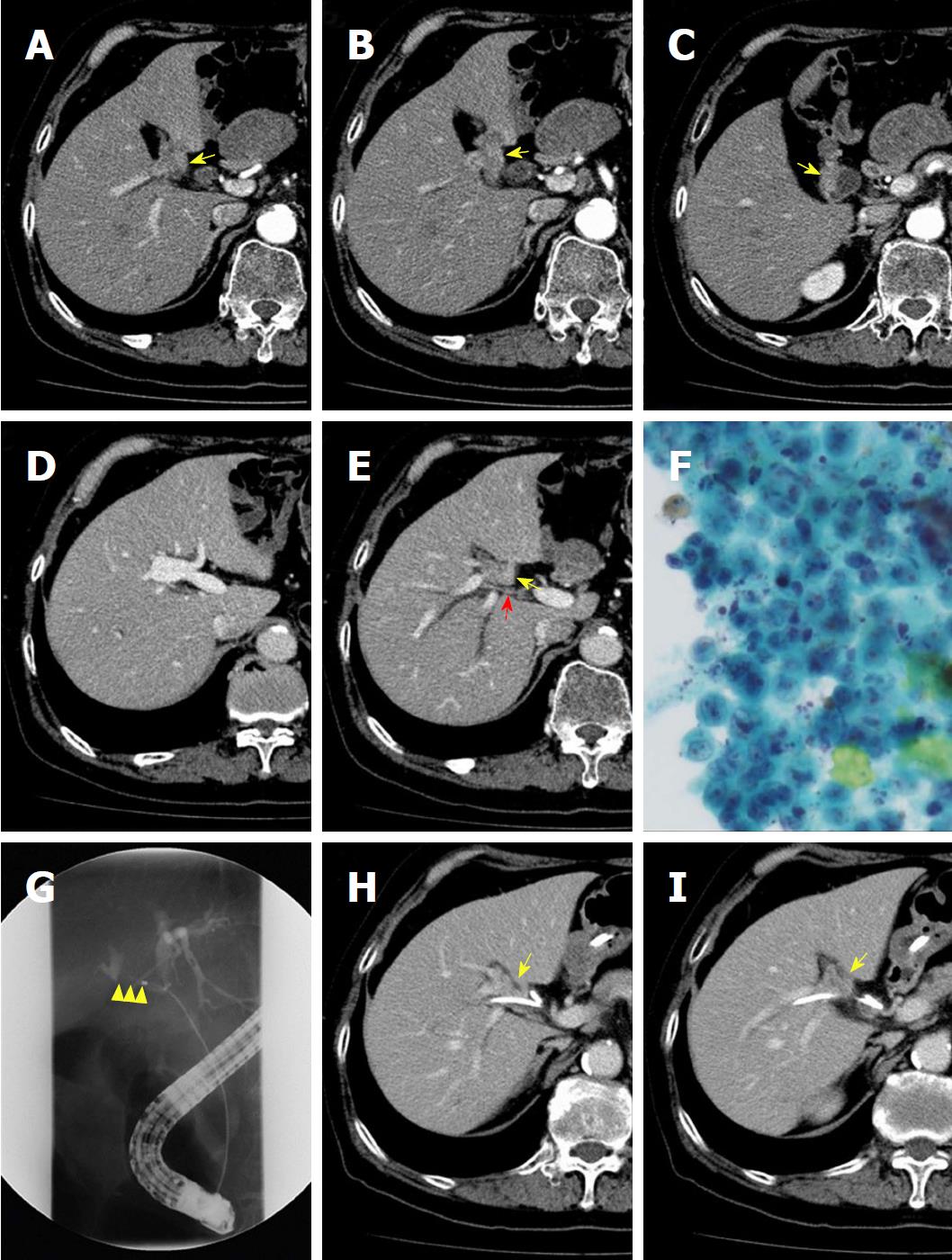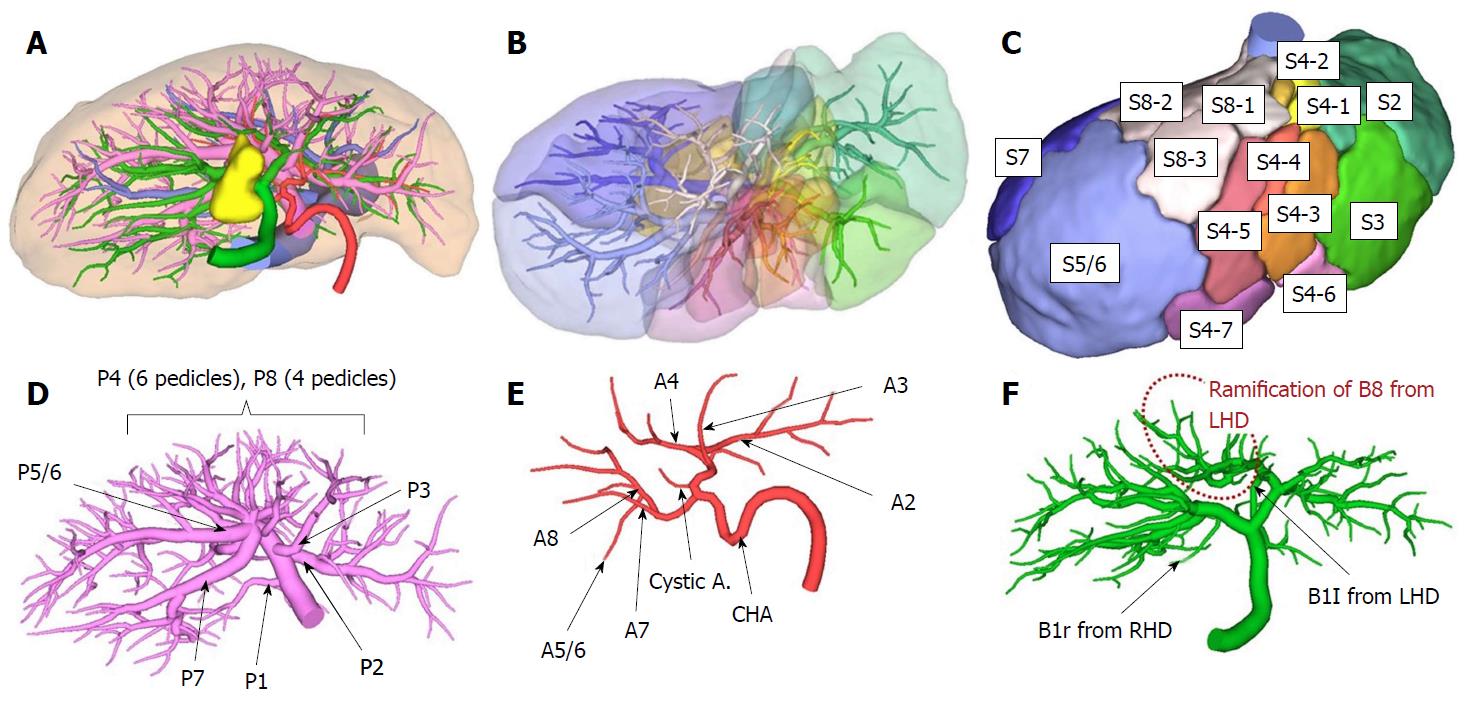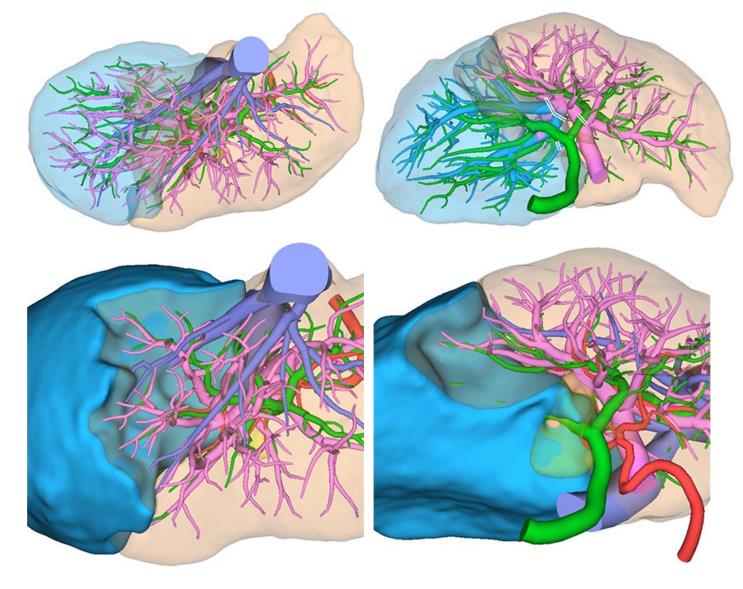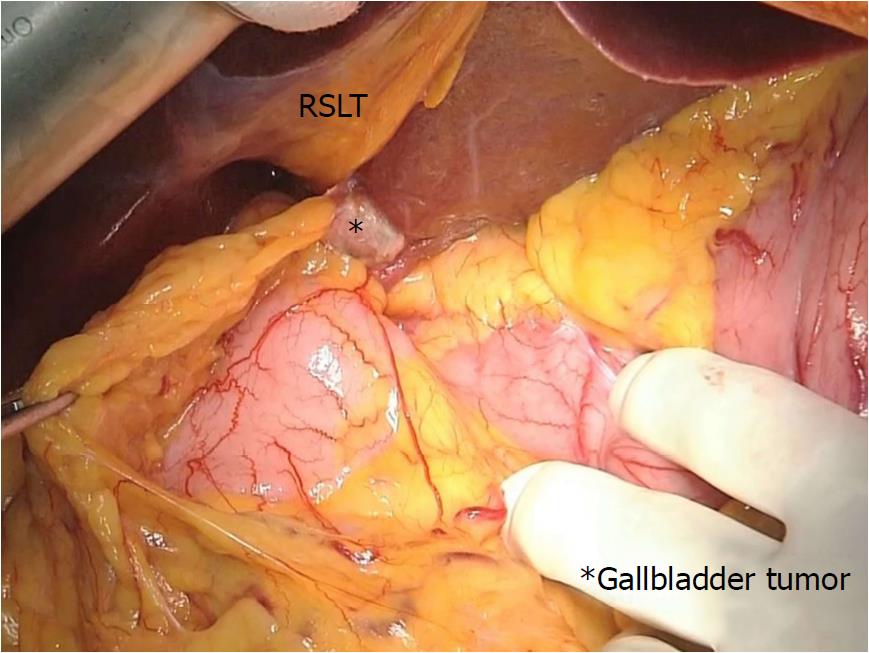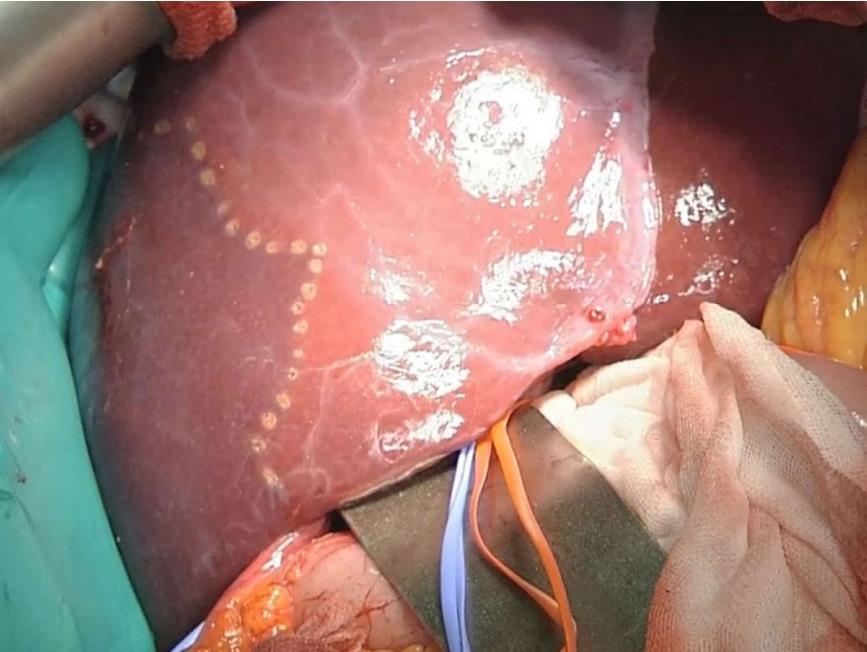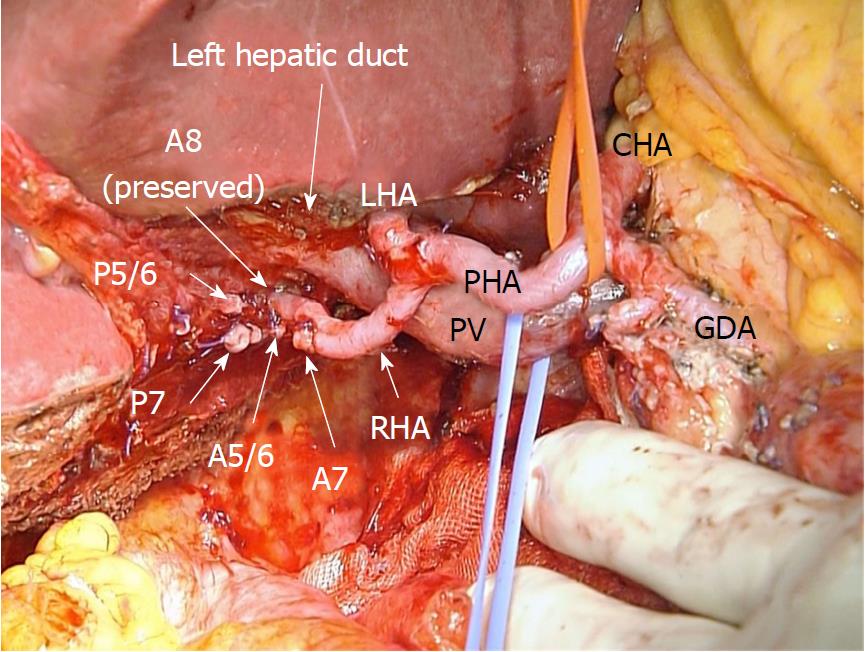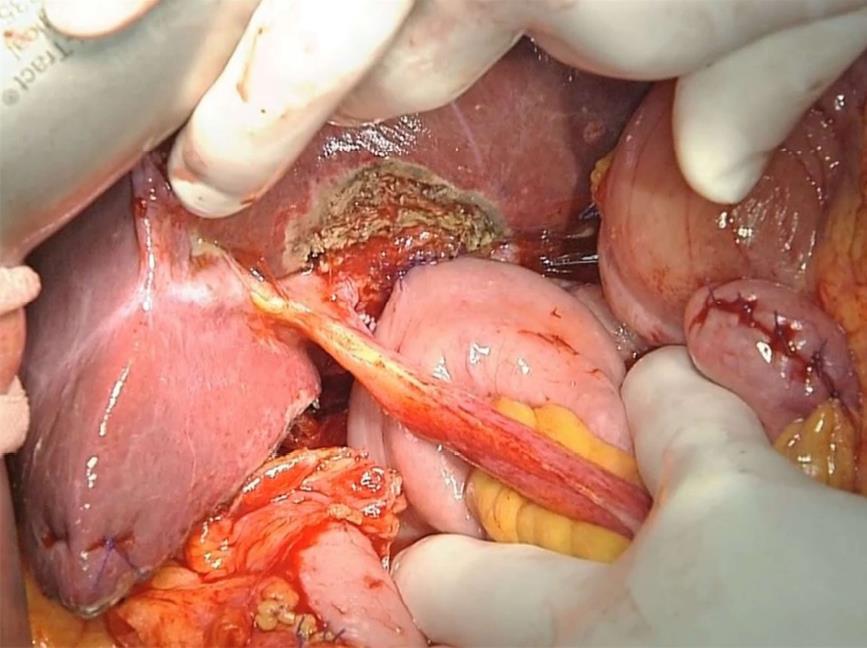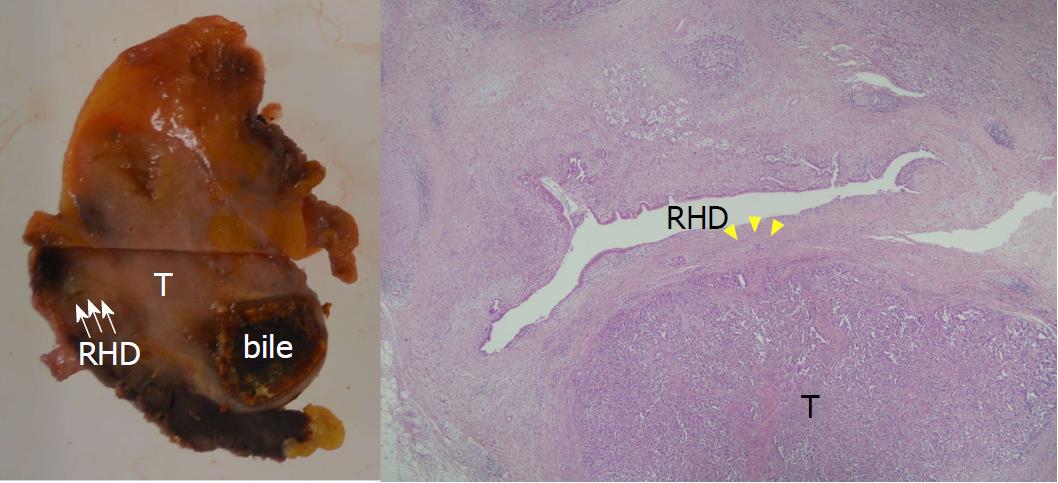Copyright
©The Author(s) 2018.
World J Hepatol. Jul 27, 2018; 10(7): 523-529
Published online Jul 27, 2018. doi: 10.4254/wjh.v10.i7.523
Published online Jul 27, 2018. doi: 10.4254/wjh.v10.i7.523
Figure 1 Contrast-enhanced computed tomography, cytological examination of bile, and endoscopic retrograde cholangiography.
A, B and C: The highly atrophied gallbladder (yellow arrow) had tumor-like localized wall thickness enhanced by contrast medium; D: The cul-de-sac of the right-sided umbilical portion is shown; E: The gallbladder (yellow arrow) is located on the left-sided liver bed. Direct infiltration of the tumor into the right hepatic artery (red arrow) is not evident; F: Cytological examination of bile obtained from endoscopic retrograde gallbladder drainage demonstrated atypical cells with a high nucleo-cytoplasmic ratio, strongly suggesting adenocarcinoma; G: Endoscopic retrograde cholangiography shows severe stenosis of the right hepatic duct (yellow arrowhead); H and I: The gallbladder tumor (yellow arrow) directly spreads to the nearby right hepatic duct where an endoscopic nasobiliary tube was placed.
Figure 2 Preoperative simulation.
A: An “all-in-one” simulation image. The intrahepatic vasculature was reconstructed at the 4th order division level (red: hepatic artery, pink: portal vein, green: bile duct, yellow: Gallbladder, blue: hepatic vein); B and C: Simulated segmentation based on the portal venous flow. Couinaud’s definition was referred to for the naming of each segment; D: All segmental portal branches were ramified from the portal trunk. Interestingly, a common trunk of P5 and P6 was present; E: Hepatic arterial ramification without anomalous anatomy; F: The bile duct of segment 8 (B8) was ramified from the left hepatic duct, not from the right hepatic duct. RHD: Right hepatic duct; LHD: Left hepatic duct.
Figure 3 Simulation of modified right-sided hepatectomy.
The resection area corresponded to the drainage territory of the right hepatic duct (segments 1r, 5, 6, and 7, blue area).
Figure 4 Hepatic hilar view during the operation.
The gallbladder was located at the left side of the right-sided ligamentum teres (RSLT).
Figure 5 Demarcation line after dividing all arterial and portal branches of segments 1r, 5, 6, and 7.
Figure 6 Final view of the hepatic hilum after hepatectomy.
The portal and hepatic arterial branches of segment 8 were preserved. A common trunk of P5 and P6 was detected during the operation, which was confirmed by ischemic changes in S5 and S6 after clamping the target branch.
Figure 7 Final view after hepaticojejunostomy.
The ligamentum teres originated from the main portal trunk and ran between S4-6 and S4-7.
Figure 8 Pathological examination.
Pathological examination shows well-differentiated tubular adenocarcinoma of the gallbladder (T) with direct invasion of the liver parenchyma and the right hepatic duct (RHD: white arrow). The tumor cell invaded to the RHD wall, but not into the lumen (yellow arrowhead) (hematoxylin eosin saffron, original magnification × 20).
- Citation: Goto T, Terajima H, Yamamoto T, Uchida Y. Hepatectomy for gallbladder-cancer with unclassified anomaly of right-sided ligamentum teres: A case report and review of the literature. World J Hepatol 2018; 10(7): 523-529
- URL: https://www.wjgnet.com/1948-5182/full/v10/i7/523.htm
- DOI: https://dx.doi.org/10.4254/wjh.v10.i7.523









